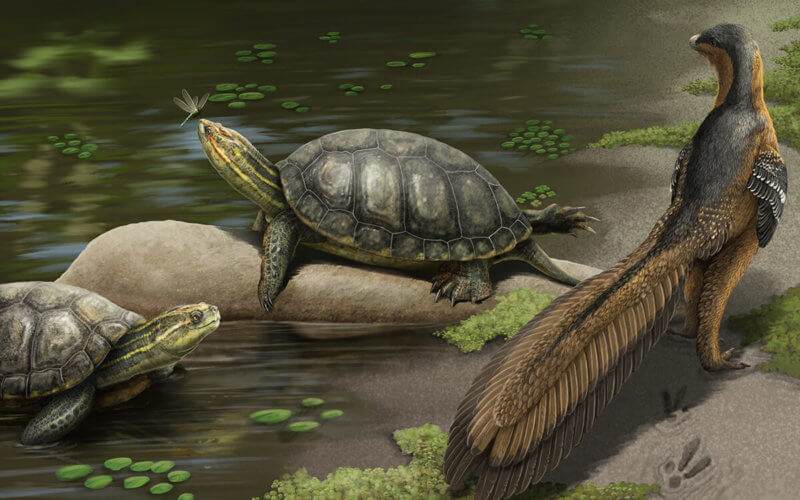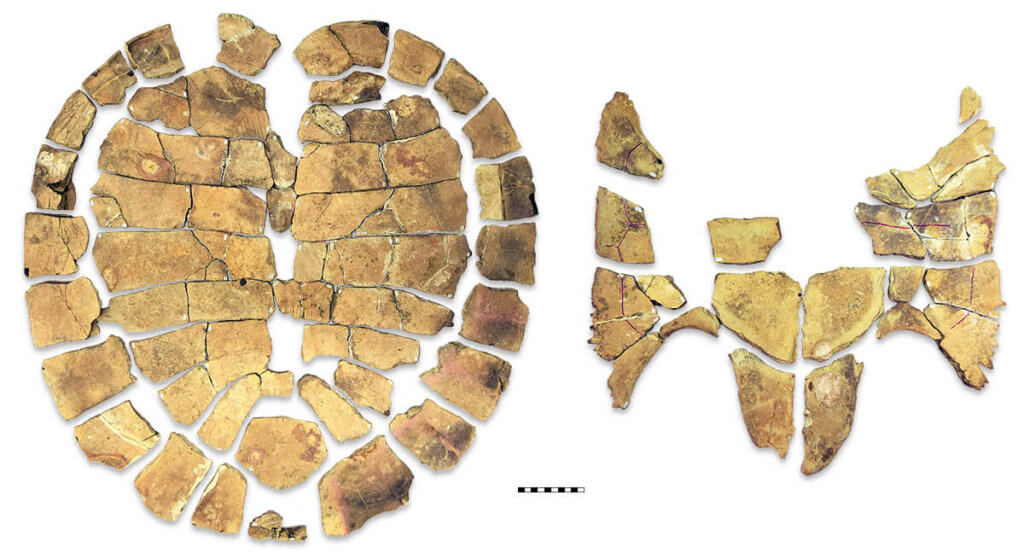
Cal State Fullerton paleontologist James F. Parham and a team of collaborators have discovered a new giant species of freshwater turtle that lived among dinosaurs 83 million years ago.
Found in Alabama and just over 3 feet long with a thick shell, this fossil turtle is one of the largest freshwater turtles to ever live in North America.

“This new species may be related to snapping turtles or the freshwater relatives of larger sea turtles. But this turtle is big. In fact, it is the largest freshwater turtle from the Mesozoic era — the age of the dinosaurs — in North America,” said Parham, professor of geological sciences.
“There are many fossil sea turtles from the eastern United States, especially from the Late Cretaceous — the last part of the Mesozoic Era. But few freshwater turtles have been named from that region at that time.”
Parham’s research collaborators are Andrew D. Gentry of the Alabama School of Mathematics and Science and Caitlin Kiernan of McWane Science Center in Birmingham, Alabama. Their research was published today (Aug. 19) in the journal The Anatomical Record: Advances in Integrative Anatomy and Evolutionary Biology.
The study revealed that the turtle is a member of a lesser known group of fossil turtles known as macrobaenids, an extinct family of turtles that inhabited the rivers and estuaries of North America and Asia roughly 95-55 million years ago.

The freshwater turtle, identified because of its anatomy, was found in marine sediments. Nonmarine animals sometimes get washed out to sea and preserved in marine sediments, Parham noted.
Macrobaenids were the subject of Parham’s doctoral dissertation at UC Berkeley and for his undergraduate thesis at the University of Rhode Island. As a former curator of paleontology at the Alabama Museum of Natural History before joining CSUF in 2012, Parham stumbled across the extinct turtle in 2011 and realized its significance.
“My familiarity with this group helped me recognize it in the collections. As soon as I opened the drawer, I knew what it was and that it was important. I will never forget that moment,” said Parham.
“Instead of being another specimen of a common fossil turtle as it was labeled, the specimen represents a new species to science.”
The fossilized remains were collected in 1984 and housed in the collection of the Alabama Museum of Natural History in Tuscaloosa. The turtle had remained unstudied and unknown to science because it had been mislabeled, Parham added.
The scientists named the new species Appalachemys ebersolei. The first part of the name, Appalachemys, is for Appalachia in the eastern United States, and the second is the Latin word for turtle, which is emys, Parham explained. The second part of the turtle’s name, ebersolei, is for colleague Jun Ebersole, who is an important voice for paleontology and science education in Alabama.
The new fossil turtle, the first one to be named from the Late Cretaceous of the eastern U.S. since the 1800s, is an important piece of the puzzle for understanding terrestrial ecosystems during the time of the dinosaurs, Parham relayed.
“We’re now able to get a better understanding of freshwater turtles during the Late Cretaceous, and in our study, we compare the distribution of freshwater turtles to that of dinosaurs,” he said.
Parham hopes that this discovery will lead to others: “After over 150 years of paleontological study in North America, what else remains to be found?”